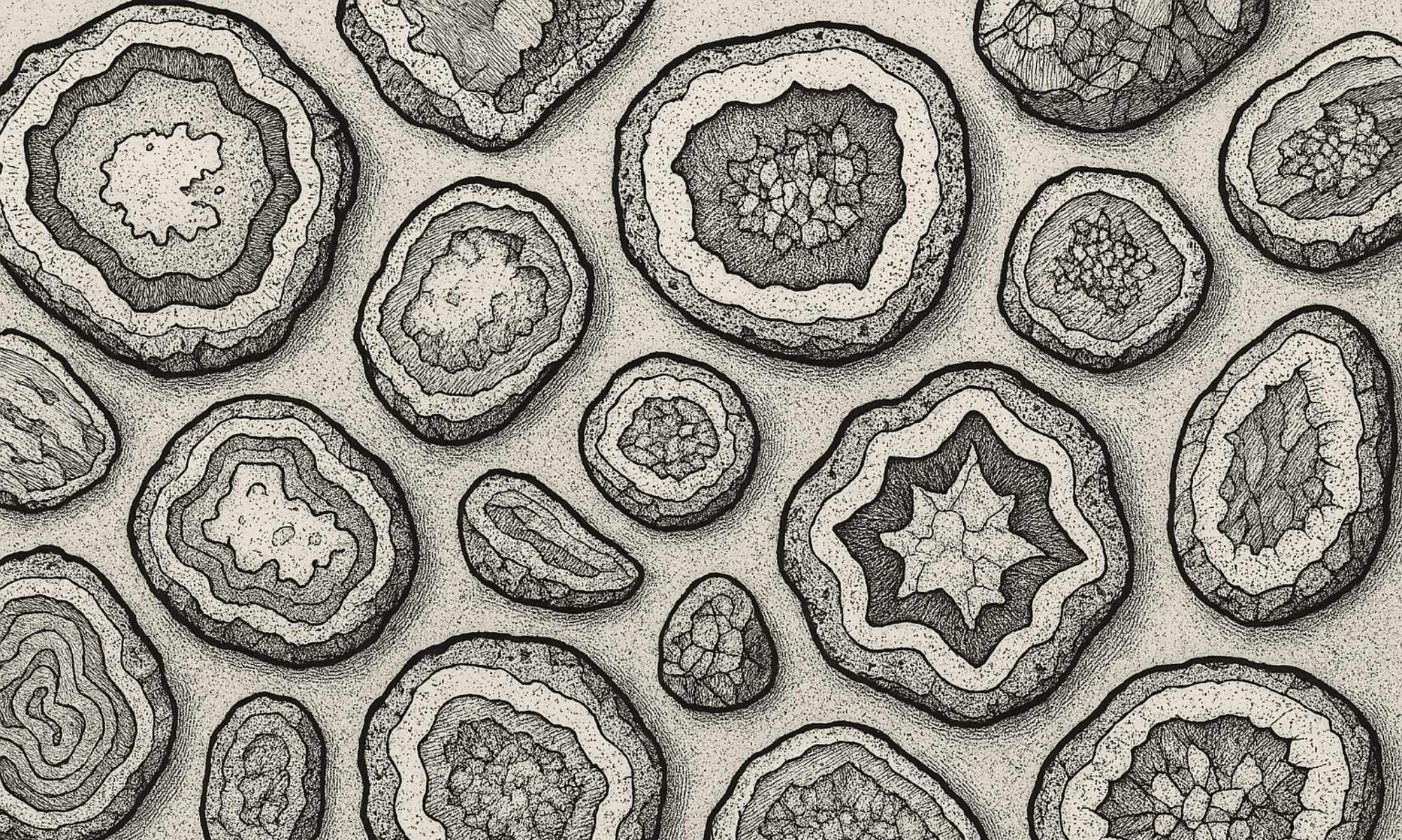Thundereggs: Nature’s Hidden Geodes
If you’ve ever split open a nondescript rock to find a dazzling surprise inside, chances are you’ve held a thunderegg. These natural wonders are Oregon’s state rock and a favorite among rockhounds and lapidary artists. But what exactly are thundereggs—and why are they so special?

What Is a Thunderegg?
A thunderegg is a type of nodule that forms in rhyolite lava flows. On the outside, they often look like plain, weathered rocks, but inside, they reveal intricate patterns of agate, jasper, opal, or quartz. Unlike geodes, which are hollow, thundereggs are typically solid or filled with finely banded material.
They’re not just pretty—they’re geological time capsules, formed millions of years ago through a perfect blend of volcanic activity, silica-rich fluids, and slow mineral crystallization.
Where Do Thundereggs Come From?
Thundereggs are found across the western United States, with especially rich deposits in Oregon’s Ochoco Mountains, the Mutton Mountains, and the famous Richardson Ranch near Madras. Washington and Idaho also have notable thunderegg beds, and similar formations appear around the world, including in Mexico, Germany, and Ethiopia.
Each location has its own “signature”—some produce eggs with deep red jasper centers, others with delicate plume agates or mossy inclusions.
Why Are They Called Thundereggs?
According to Native American legend from the Warm Springs tribes of Oregon, thundereggs were thrown by battling thunder spirits that lived in the mountains. The name stuck, and it fits—the cracked-open thunderegg reveals a dramatic interior that often looks like a miniature storm frozen in stone.
Collecting and Cutting Thundereggs
Most thundereggs are found in hard rhyolite matrix, which makes them tricky to extract. Once collected, they’re best cut with a slab or trim saw to expose the interior. No two are alike—some have concentric banding, others have druzy quartz pockets or even opal-filled centers.
Lapidary artists value them for cabbing, display, and jewelry. When polished, their intricate interiors come alive with color and texture.
How to Identify a Thunderegg in the Wild
While it takes a trained eye (and often a saw) to be sure, here are some clues:
- Rounded shape, often egg-like or lumpy.
- Rough, pitted exterior from weathered rhyolite.
- Heavier than average for its size due to dense silica.
- Sometimes faint mineral “leakage” at cracks—like small agate hints.
Ready to Hunt or Buy?
Whether you’re planning your own rockhounding trip or want to browse a selection of cut and raw thundereggs, there’s something magical about these volcanic treasures. Each one holds a surprise millions of years in the making—just waiting to be revealed.
